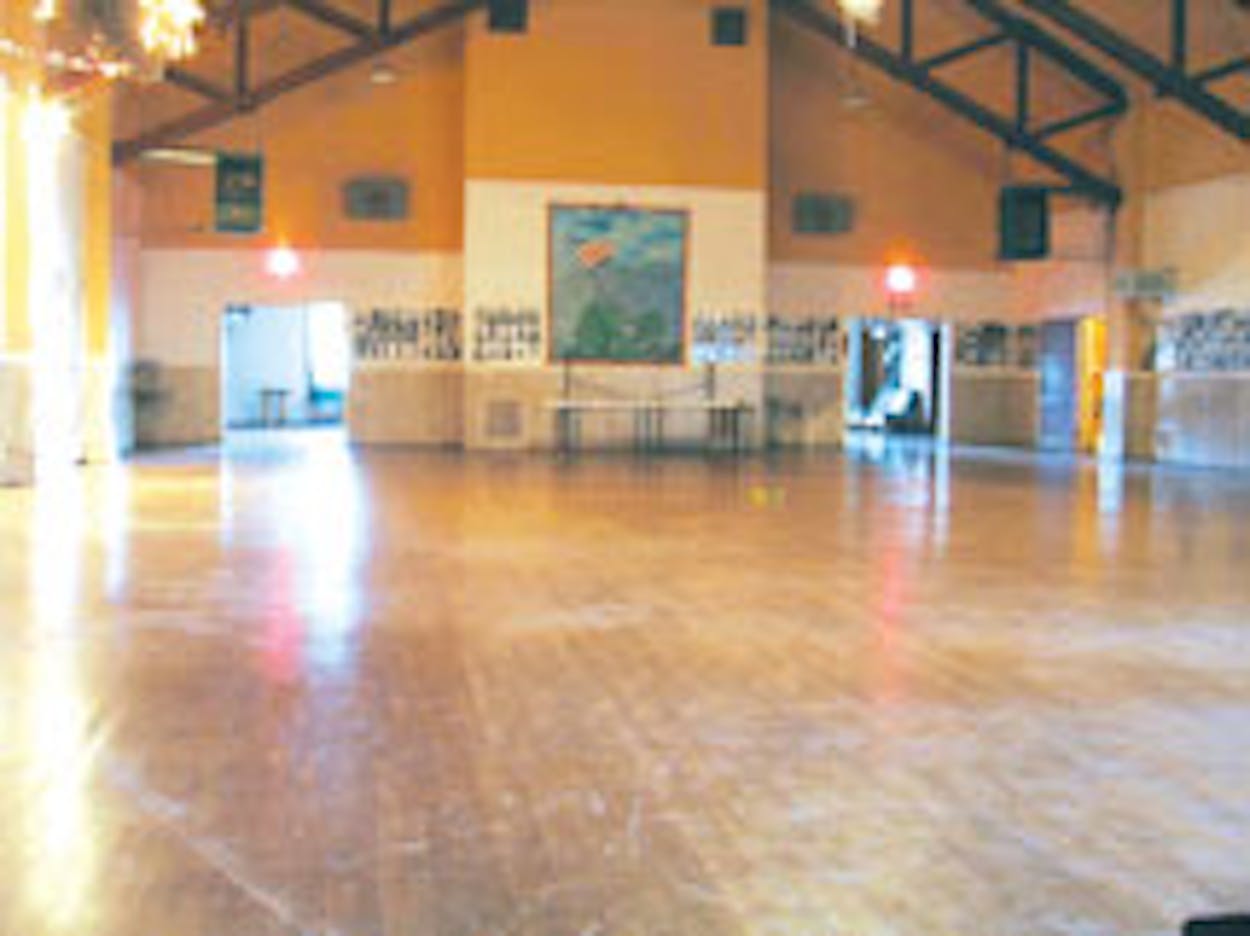The night I got married we danced for hours at the AmVets Post 65, in Marfa. It’s a large building with sheet-metal siding, a beat-up but gracious wooden stage, dramatic wooden rafters, and an Iwo Jima mural between the doors to the lobby. Like a lot of small-town halls, it’s a hardworking place. Over the years, I’d been to gun shows, concerts, and birthday parties there. The week before the wedding, it had been the site of the Marfa High School prom, and “MHS 2004” was still stapled up on either side of the stage.
An AmVets hall is a special place for a celebration. The walls of Post 65 are filled with photos of veterans—and a few soldiers who never came home from their wars. Three large portraits in the lobby, near the bar, pay tribute to the town’s Vietnam casualties, Mario Juan Mendias, Joe Henry Samaniego, and Eligio Rice Gonzalez Jr. As we ate and drank and laughed and toasted, the young men in uniform in the old black and white pictures watched us. We had hired a western swing trio out of Austin, and when the meal was through, we pushed back the tables and spent the rest of the evening careering drunkenly around the dance floor to the racing fiddle of “Ida Red” and “Little Liza Jane,” sweating through our fancy clothes under the silent eyes of the veterans. Here we were, my wife and I, beginning a new life, and all around us hung reminders of how lucky we were to be alive. We looked at the pictures on the wall and danced harder.
I’ve been thinking a lot about that night as we put this issue together. The places on our list of classic Texas dance halls (“Step Right Up”) are all considerably more storied and iconic than the AmVets Post 65 in Marfa, but most of them share its multi-purpose, community-centered spirit. What makes them great is not the fame of the musicians who come to play on their stages but the loyalty and longevity of the people who come to dance on their floors. For the past several months, senior editor John Spong has spent his weekends driving to these places, and the stories he’s brought home—about old couples watching their grandchildren learn to two-step in the same spot where they shared their first dance and bartenders who’ve watched three generations grow up tapping their toes—have taken me back to the AmVets.
At the same time, we’ve been working on an amazing compilation of tributes to folks who died in 2009 (“People We’ll Miss”). At the AmVets, death and dancing live side by side; in this issue of the magazine the two are neighbors as well. I think this is right. There are few experiences that make you feel more alive than spinning around a dance floor with a loved one on your arm. Let the experience of reading about the dead serve as a reminder of what you, the living, can do. You can go dancing. On my wedding night, I recall a moment when I peeled myself away from some maniacal jig to go get a drink of water. As I headed back to the dance floor, I looked up and saw the portrait of Joe Henry Samaniego, the oldest of the three. He was thirty-four when he died, married, with a brand-new child he had never met. He liked to play basketball. My heart was still racing from the dancing and my ears were still ringing and a little bit of water was dripping down my chin. I stared up at Joe Henry until someone grabbed me by the arm and asked if I wanted to dance.
Next month
Bum Steers; how an obscure Austin film festival is taking over the world; why Texas needs more parks; and where the Bush diaspora landed.







